How ButterDocs messages to an audience that doesn't know they have a problem.
Brand Voice Breakdown #1
I have a confession: I am very slow when it comes to adopting new tech.
I’m also stubborn as a mule.
The result is that I am probably the hardest kind of person to convince that I need a new tool in my tech stack.
Which is why I’m so surprised by how enchanted I am with ButterDocs.
I started playing with the tool last weekend and fell in love pretty quickly. What’s even more impressive is that I wasn’t looking for a new writing tool. I’m perfectly happy with Google Docs (ButterDocs’ main competitive alternative).
So, for this week’s Brand Voice Breakdown, I wanted to break down their positioning, messaging, and persuasion tactics — and why they worked.
Let’s dig in.
What is ButterDocs?
ButterDocs bills itself as “a writing software that helps you run a more productive writing process with a built-in notes app, outlining board, tools for focus, and collaboration built for professional writing & editing workflows.”
(That’s a bit of a mouthful, but let’s skip the critique for now.)
Basically, it’s Google Docs on steroids. I think their About page does a great job of explaining why they exist in the first place:
ButterDocs’ positioning problem: They’re going against an industry standard.
Unless you’ve been living under a rock for the last 15+ years, you’ve heard of Google Docs. It’s the free writing software that obliterated Microsoft Word back in like, 2012.
(I don’t really remember when it came out, and the history appears a bit murky. However I do remember starting to use Google Docs in high school and thinking, Oh my God this is so nice.)
Very little has changed in the platform since its inception — and that’s kind of okay. It’s an idiot-proof tool that lets you write a document and work with other people. What more could you want?
Apparently, a lot. And the ButterDocs team has taken on the task of delivering those missing features to the people.
Their solution: Big fish, small pond.
Working against Google Docs creates a couple of obvious problems for ButterDocs:
Google has a basically unlimited budget
They’re a household name
Google Docs is free for Gmail users
There’s no need to switch to a paid service
To even have a chance at growth, ButterDocs has to convince people there’s a problem in the first place — and they’re only going to do that if they target a specific sub-segment of an audience.
April Dunford calls this the “big fish in a small pond” method. They’re not trying to fight Google Docs directly. Instead, they’re trying to chip away at a smaller segment of power users who could benefit from more features.
It looks like they’ve already done this in the past. When I went to subscribe, I saw the billing agent was Arc Studio — a screenwriting software I’d never heard of. My hunch is that Arc Studio wanted to expand its market base without sacrificing a trusted brand (and brilliant product). They’ve opened up ButterDocs as a secondary “version” of Arc Studio and will figure out how to develop the app further around the users that flock to it.
Selfishly, I hope this tool becomes targeted towards copywriters like myself. Novel writers already have Scrivener. Every copywriter I know uses Google Docs.
The messaging strategy: Make Google Docs look prehistoric.
ButterDocs knows they have an uphill battle against Google. But I think the bigger uphill battle they’re facing (and which they know about) is educating people on why they should switch away from a stable market leader.
If we look at the five stages of awareness, I’d argue that most of the ButterDocs audience is like me — blissfully unaware they have a problem in the first place.
So, how do you message around that?
You have to focus on the pains and convince people they have a problem in the first place.
In ButterDocs’ universe, that means showing people why Google Docs is an awful experience in 2024.
And I’ve gotta be honest — they’re doing a pretty good job of this with the product.
Example: The Stash feature
As I was clicking through ButterDocs’ site, the thing that really captured my attention was the Stash feature.
I can’t tell you how much I love this idea.
As a writer, I often come up with lines of copy that are brilliant, but which don’t fit into the current spot. In the past, I’d copy this line and paste it at the bottom of the Google Doc in my “Graveyard of Good Ideas.”
The Stash feature changes it though. I can just highlight the text then save it for later. It’s a solution I didn’t know I needed to a problem I didn’t know I had.
Hell, now that I know I have this problem I see it everywhere. I’m writing this post in Substack directly — and keep finding myself wishing I could stash a line here or there.
Example: Killer onboarding.
Once you sign up for the free trial of ButterDocs, they have you go through a checklist of “skills” as part of the onboarding. Each skill takes less than a minute to complete, and it helps you understand how the product is so much better than Google Docs.
I already mentioned that the Stash feature captured my attention and convinced me to log into the free trial. But the thing that really got me thinking This might be worth investing in was the research feature and backlinks in Notes.
I really have to give the Product team a shoutout — this was a solid onboarding experience. It also does a lot of the heavy lifting for sales.
By the end of the experience, I knew I’d never be able to look at Google Docs the same way again.
The brand (voice) strategy: Endear themselves to writers.
So far, ButterDocs has done two things well:
They’ve positioned themselves as a modern writing software for professional writers.
They’re messaging focuses on making Google Docs look like garbage.
Now, let’s look at how they’re making that obvious in their brand (voice).
They bothered to hire a Head of Writing.
Something that baffles me about AI writing companies is that almost none of them message to actual writers. Instead, most of them have messaging that effectively says, “Cut the bloat on your marketing team and replace your humans with a robot!”
I don’t get this. When I was in-house as the Content lead, I would have been the person responsible for the purchase of a writing software. There’s a zero percent chance any of that messaging would have convinced me to build a business case for my boss.
ButterDocs has done something different — they’re very clearly talking to professional writers in a way that shows they understand the day-to-day experience. It shows that they give a shit about the people they are selling to.
Another very obvious way of humanizing and endearing the brand to writers is the fact that they’ve bothered to hire an actual Head of Writing. This is a real guy! He’s the one showing off the product in these videos!
Look, I’m a marketer. I know how the sausage gets made. But even this small bit of familiarity cracked me open and literally made me think Okay, these people probably actually know what it’s like to spend an hour wrestling with a single paragraph.
They’ve got a personable, charismatic voice.
ButterDocs is very obviously taking advantage of their position as a smaller company against a gigantic faceless corporation. Their brand is personal, to the point where they have photos of the team on the About page.
I won’t comment on their visual design (because it’s not my area of expertise). But if you break down their voice into the three components you get:
A casual vocabulary that uses a lot of real language that writers use.
Playful, honest, and direct tones that explain what the product does, but in a slightly cheeky way that shades Google.
Relaxed, normal cadence. As a writer, you feel like you’re talking to a friend.
Let’s look at a side-by-side comparison. Here’s how Google talks about its collaboration features:
And here’s how ButterDocs does it:
ButterDocs’ tone is a bit more direct than Google’s (even if they use more advanced vocabulary with words like “branch drafts” and “asynchronous”).
There’s also more play. The visuals show people editing a document in ButterDocs about, well, butter.
It’s even a little shady. Did you notice the “No more anonymous elephants in the room” line?
Where there are opportunities for improvement.
A major disclaimer: what follows is my totally unsolicited opinion. The truth is that I love the ButterDocs site — but I think there’s a good lesson here so I want to dig in.
I also want to say that the ButterDocs team is smart. They’re still really clearly in the early stages. At the time of writing, it looks like they only launched two months ago. They know their messaging is going to change.
But, if they asked for my advice (they didn’t), I’d tell them I think their website messaging is still a little too product-focused.
The truth is that professional writers use Google Docs.
It’s essentially free for us. I pay for Google Suite as part of my email subscription.
Our clients all know how to use it. I can trust that I’ll look professional vs. forcing my clients to learn some new software.
We all know how to use it. I’m a writer — not a technical wizard.
I’m not convinced that a mediocre UX is enough to motivate most people I know to buy a new tool and change their entire workflows.
Instead, I think ButterDocs could dig deeper into the pain and tell me more about it. What’s the problem behind the problem, and why do I need to solve it now?
For example, here’s the collaboration features section that I previously mentioned. This is what’s currently on the website.
I’d rewrite the headlines to be more direct about the pain:
I’d also try to make them more educational on what the feature is before selling the value. Take a look at the Async section. As a writer I had no idea how to even think about that “branch documents” until I saw it in the demo.
Remember though — this is a totally unsolicited opinion. It’s also dished without the benefit of understanding the internal context and decisions. It’s easy to throw rocks at things that shine.
What B2B SaaS teams can learn.
The ButterDocs team knows what they’re doing, and it’s pretty obvious.
They’ve done a good job of picking a category that still gives them freedom to explore and learn, and they’ve done a good job of figuring out exactly how their product is unique.
I’d also say they’ve done an amazing job with the onboarding. Once you get into this tool, the value is totally obvious.
The only thing that could be stronger is the framing of the messaging.
I write a lot about how you shouldn’t always talk about the “benefits” of your product, and this is a great example of why. Talking about only the positive benefits of the product’s features (rather than the pain it resolves) means the website’s not as memorable or persuasive as it could be.
So, the takeaway if you’re a marketer at a growth-stage B2B?
Don’t assume your audience wants to hear about your product yet.
Make sure they know they have a problem in the first place — and that they understand just how painful it really is.
Thanks for reading.
If you’ve made it this far, thanks for reading. This was supposed to be short, and turned into almost 2,000 words typed out on a Saturday morning.
Regardless, I massively appreciate you being here.
If you’re subscribed, you’ll get a newsletter roundup as usual on Friday. In it you’ll get more links to interesting B2B content written by myself and others.
If you’re not subscribed, hopefully this breakdown convinced you to take that next step.
See you soon.



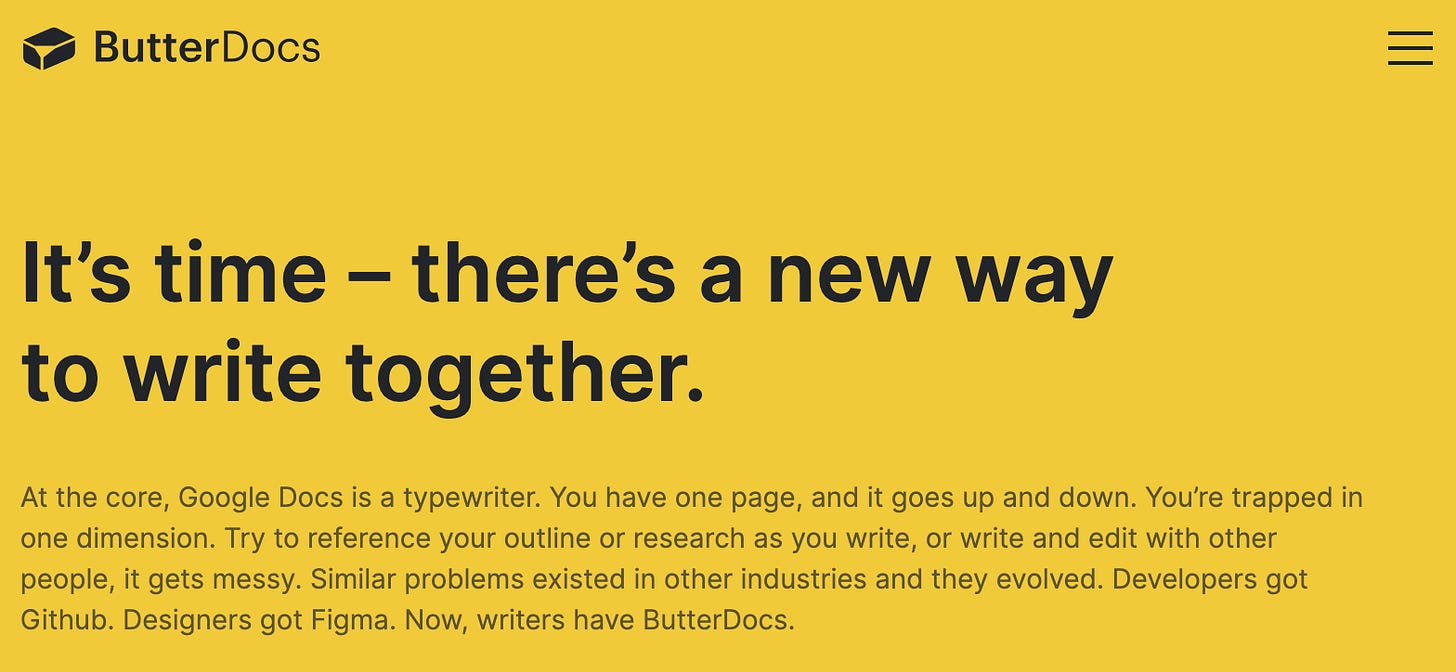
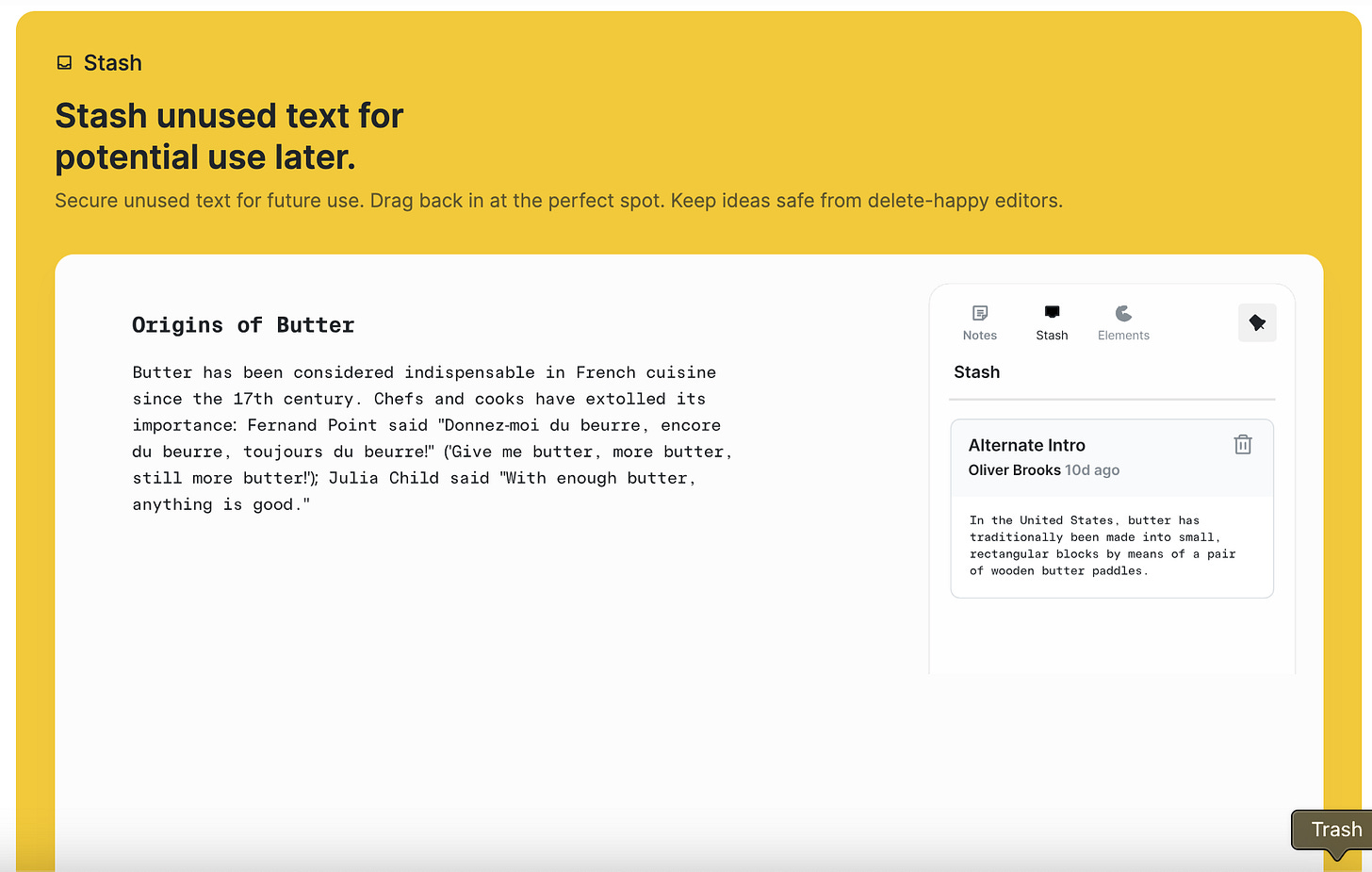

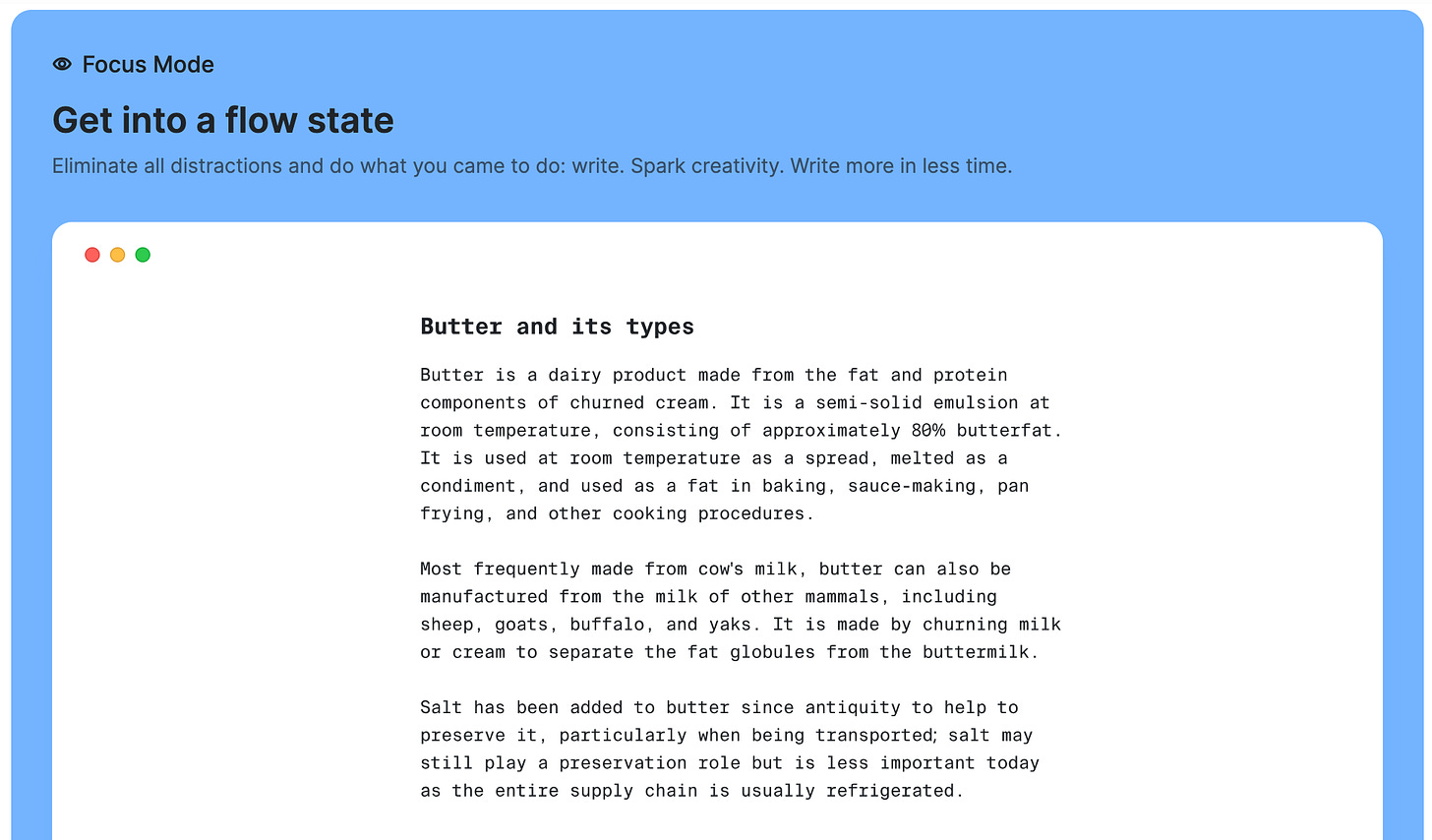
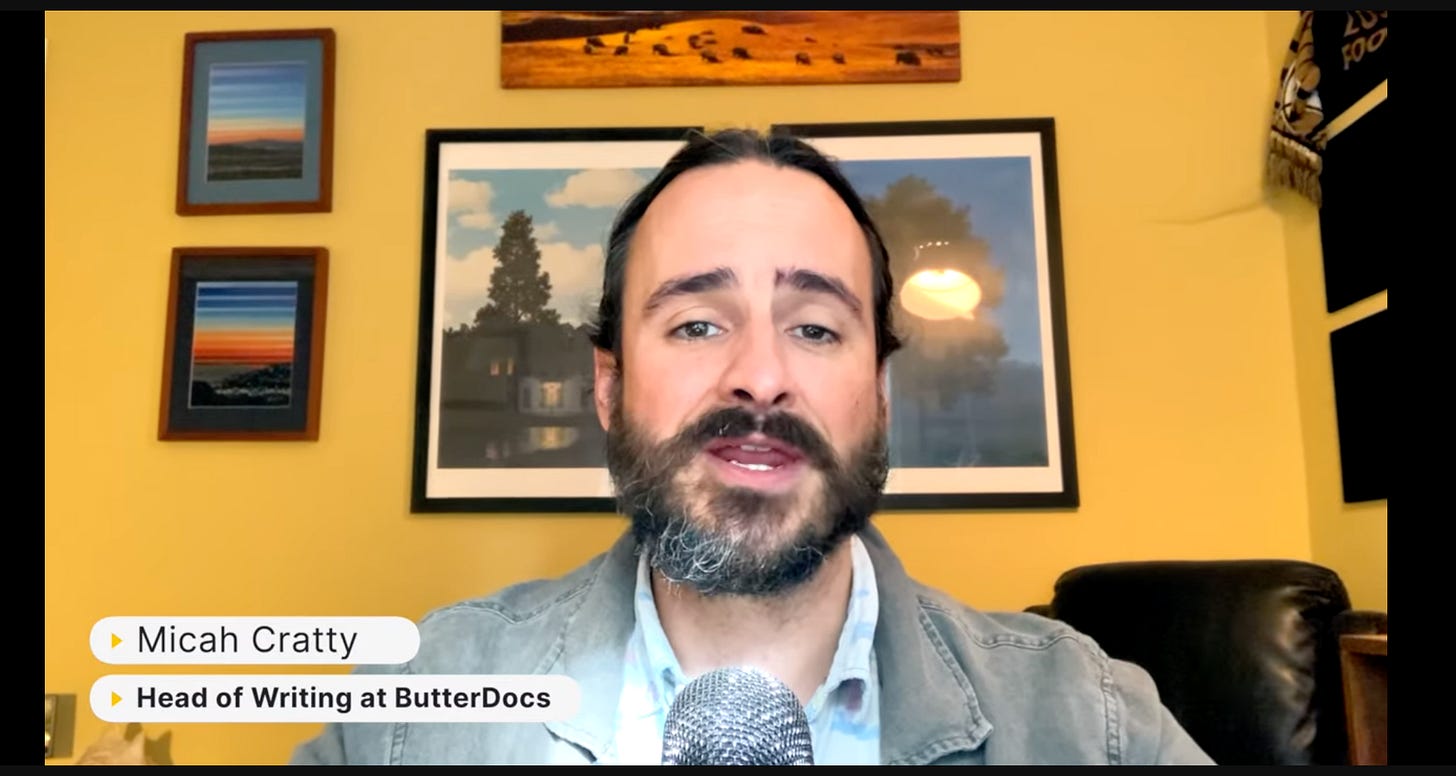
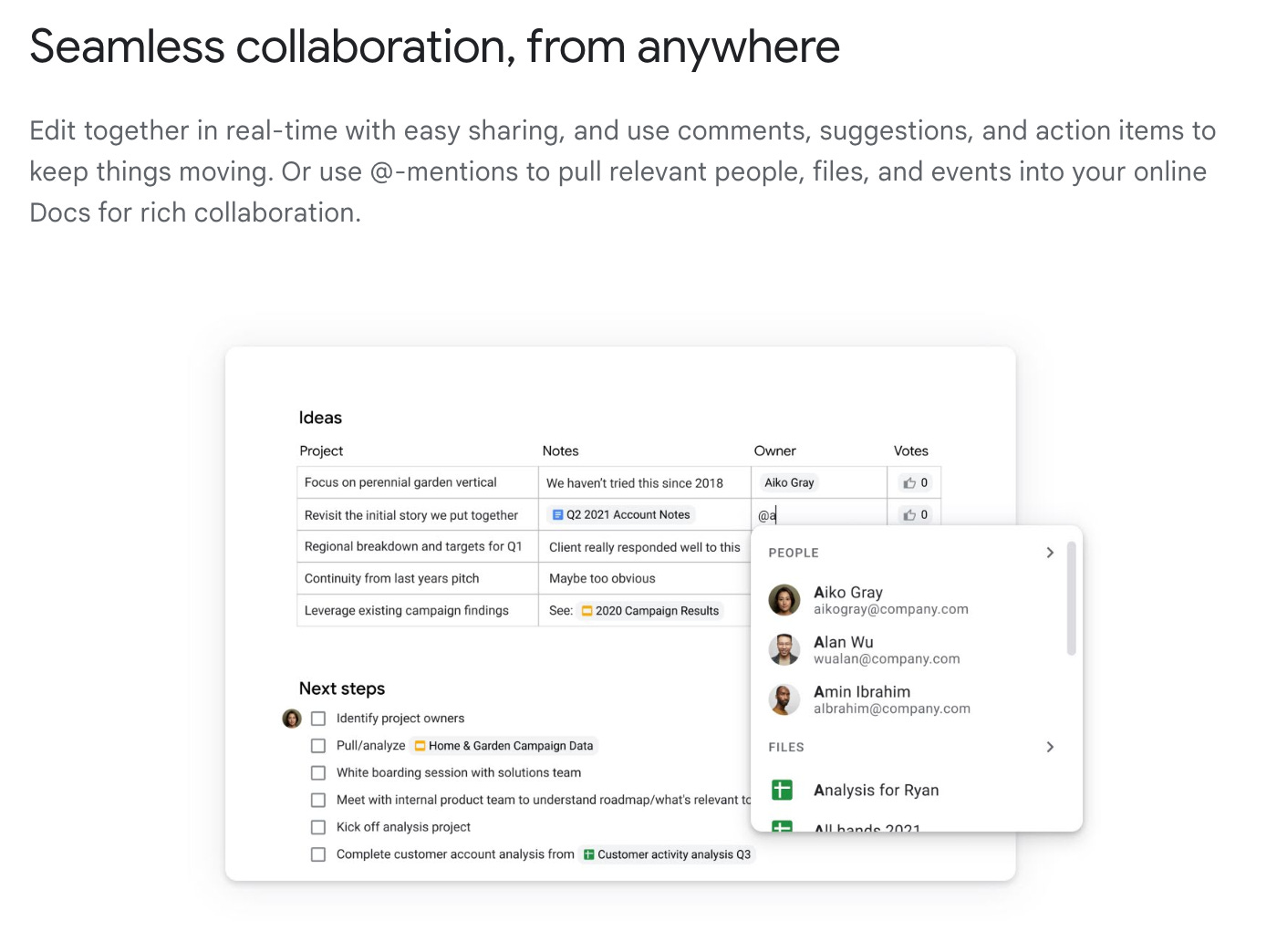

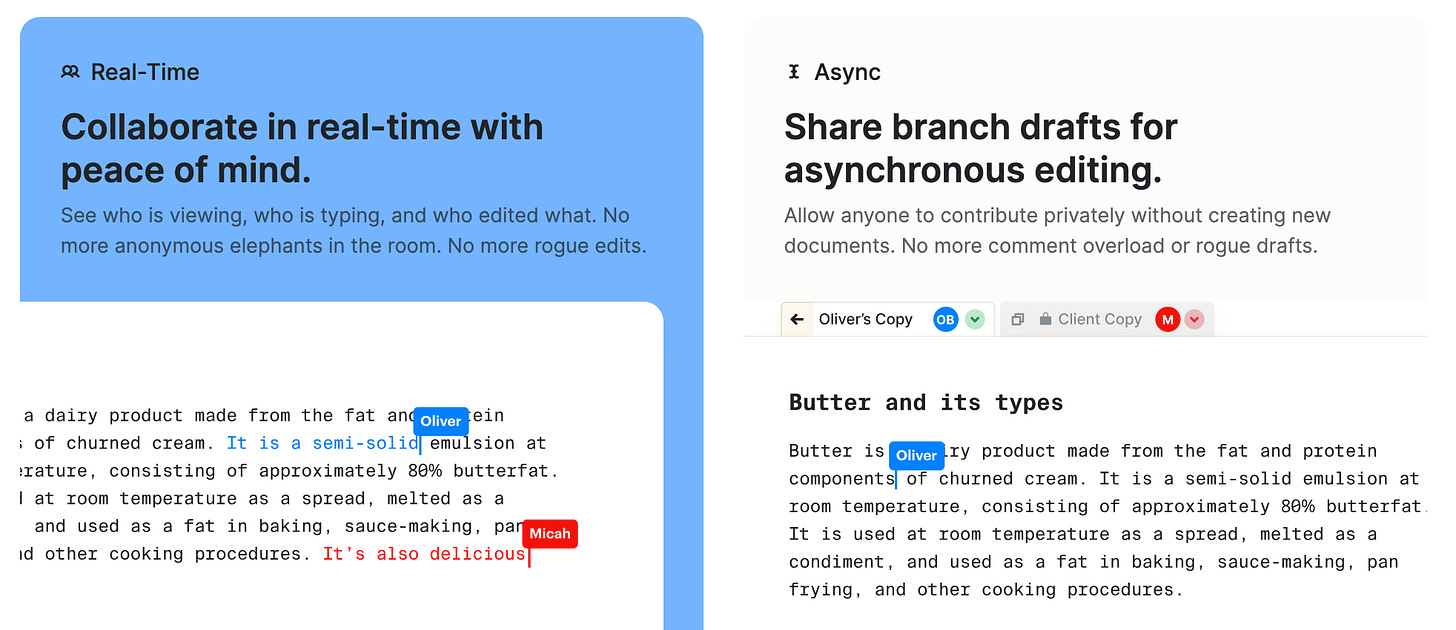
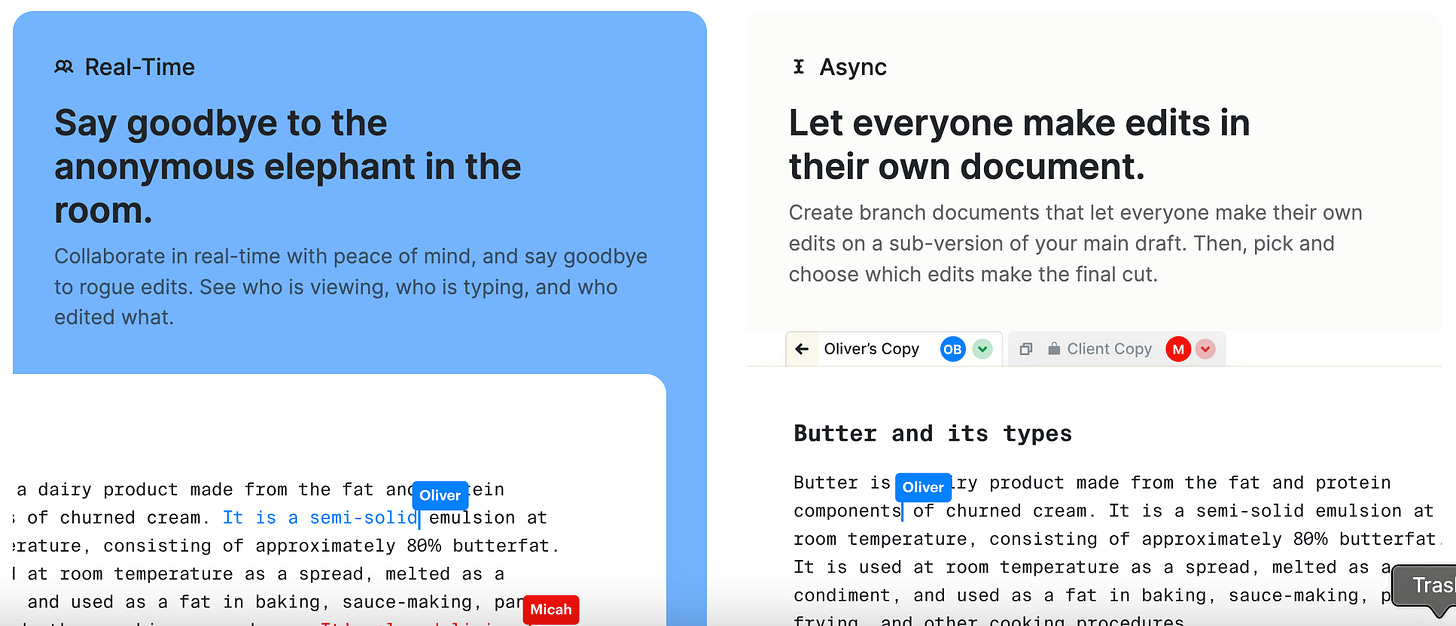
What a great overview, Grace! I'll definitely be checking out ButterDocs. It seems to align more with the needs of content writers than "copywriters" in some respects, but I like some of the features I'm seeing.
Again, wonderful overview. They should give you affiliate commissions on sign-ups, haha!